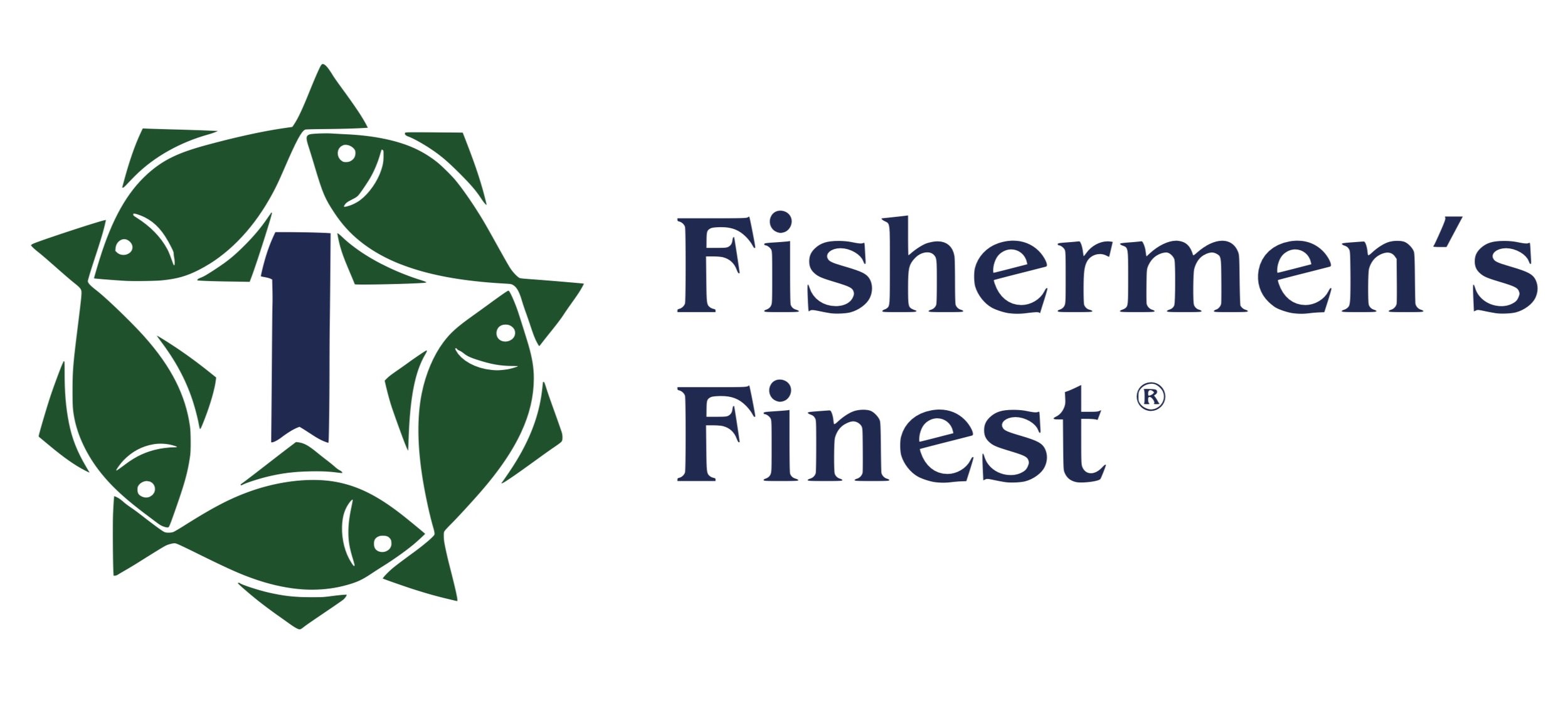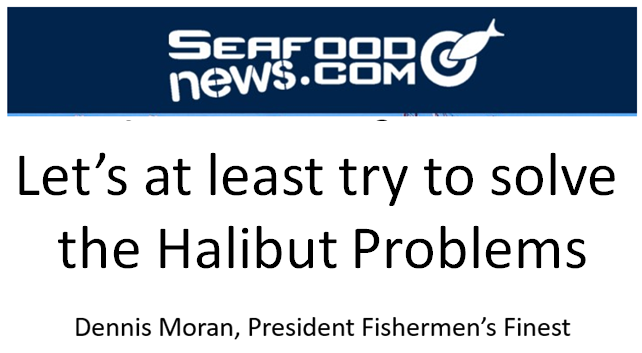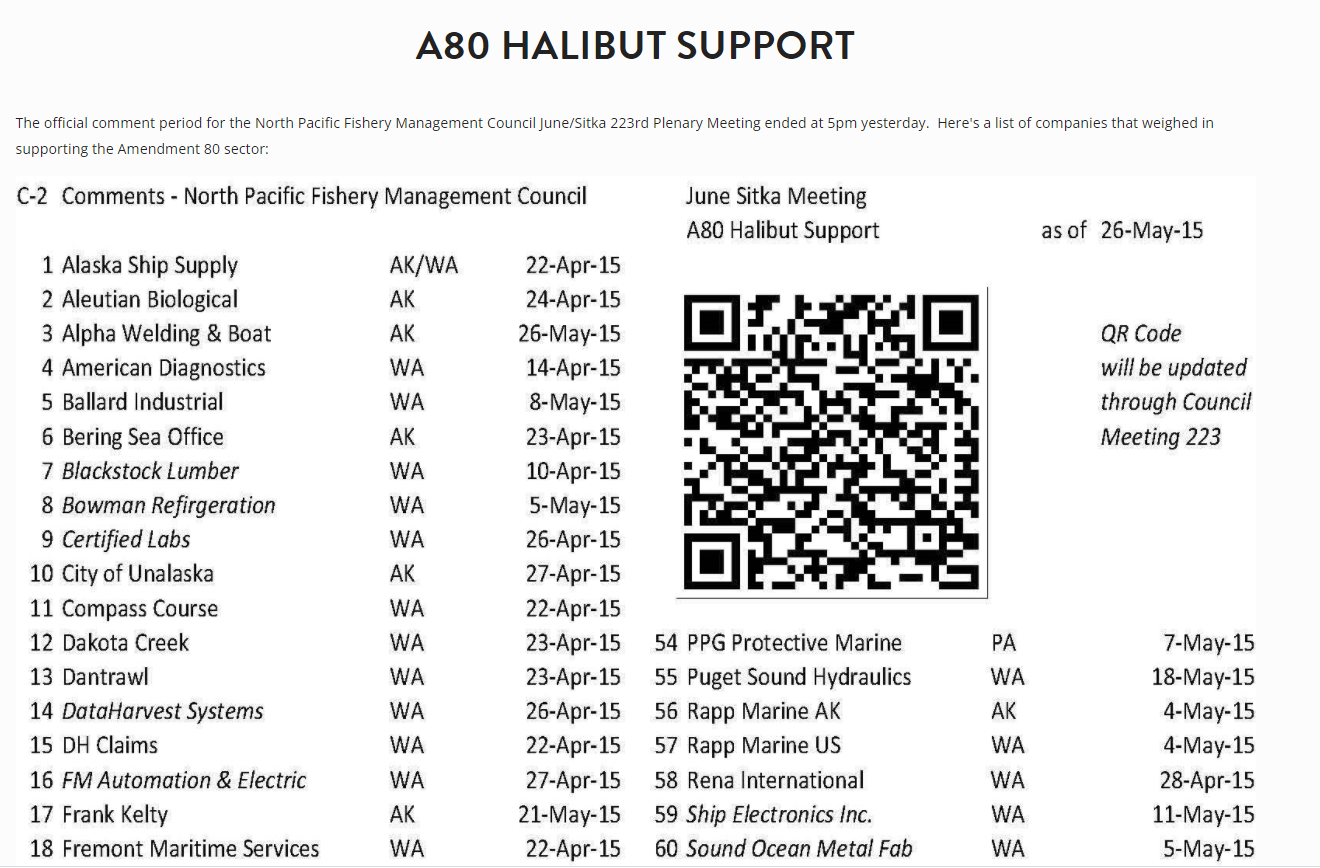Halibut
This page will be constantly updated with information regarding the Halibut issue before the North Pacific Fishery Management Council (NPFMC) December 2021 meeting:
257th Plenary Session, North Pacific Fishery Management Council December 8-16, 2021, via webconference
Background: Reducing Halibut PSC in the Bering Sea Aleutian Islands has been a top priority of the North Pacific Fisheries Management Council (Council) for decades. This has been a successful effort, as halibut bycatch levels are at their lowest levels in history. Since implementation of the Amendment 80 program in 2008, the Amendment 80 fleet (19 ships, 2,500 crew) has operated under a fishery cooperative structure, allowing for rationalization of our fisheries and providing our sector with tools to reduce halibut PSC. In total, NMFS and the Council imposed A80 halibut cuts totaling 37% over a seven year period (2008 – 2015), then another 25% cut in June of 2015. In addition to these cuts, A80 adopted a private intercompany agreement to go even further, as far as reasonably possible without causing massive disruption and crew layoffs. As a result, Today:
the A80 halibut bycatch rates are the lowest among all non-pelagic trawl sectors in the eastern Pacific, including trawl fisheries in Western Canada;
A80 Halibut bycatch is below 0.5% (.005) of the A80 fleetwide total groundfish harvest;
A80 fleetwide average uses 1 lb of halibut bycatch to harvest ~232 lbs of target groundfish. To compare, during 2010-2015, some A80 companies were as low as 1:50 and 1:80. This improvement is NOT due to heavy handed and counterproductive government action. It has been achieved by the A80 companies voluntarily working together to achieve the best results possible, A80 intercompany agreements regulating best practices, massive A80 investment in tech and industry consolidation causing the poor performers to exit the fishery.
Consequences.
Fuel use and carbon footprint are up and are expected to go up further with additional halibut cuts. The 2015 cuts of 25% coincided with a fleetwide approximately 20% increase in fuel use and carbon footprint. Assuming that to be causal, we can reasonably expect that forced cuts of 15%, 25% and 35% will cause carbon footprint increases of 12%, 20% and 28% respectively.
Reduced harvest and lost jobs. Target harvest will likely decrease 15%, 25% and 35%, with expected job losses of 400, 625 and 875, respectively; causing lost gross wages to workers families of $36m, $56m and $79m respectively.
This Council Action: Since 2015, the Council has been pursuing a theory of “Abundance Based Management” (ABM) to resolve the halibut allocation issues in the Bering Sea. ABM was basically intended to be a sliding scale system, such that that halibut available to the A80 goes up and down based on the status of the Pacific halibut stock. The Council would set up structure that "indexes" halibut PSC to abundance, linking PSC limits to two different annual scientific surveys that give data on Pacific halibut- one survey gives data on the smaller size halibut and one survey gives data on the larger size halibut.
The ABM was sent to the scientists for analysis, principally to determine whether, and in what manner, reducing the A80 halibut allocation would benefit the halibut stock, and whether it would do so in a way that would permit the directed halibut fishery to get an increased allocation.
This is what the science says:
There is no benefit to the Spawning Stock Biomass (SSB) of the BSAI Pacific halibut stock of managing in this abundance-based fashion, so that even if the A80 allocation was reduced to ZERO halibut there would be no benefit to the stock of Pacific halibut (ie. this is not a conservation issue).
There is very little benefit to the directed halibut fisheries of making small, moderate, or even massive cuts to the A80 halibut allocation. In fact, the model shows that a 49% cut to A80 halibut results in a 9% increase to the halibut fishery catch.
The reasons for why these are the outcomes are numerous, complex, and nuanced. But what the Council’s own science and model clearly show is that abundance based management and cutting halibut bycatch does not result in the more fish for directed halibut users or “conservation” - AND the cuts cannot be absorbed by our sector without massive losses in groundfish catch and operating days.
Fishermen’s Finest past articles and posts regarding halibut. Read more here.
Highlighted articles since the 223rd North Pacific Fishery Management Council Plenary Meeting:
“If your only tool is a hammer, every problem looks like a nail.”- Zen Master or maybe Mark Twain.
As we get close to the North Pacific Fishery Management Council’s final action cutting the Amendment 80 sector’s halibut - yet again - we should pause and reflect on what this will accomplish.
If you read the latest reports from the Halibut Commission -- and I do because I'm nerdy about fish -- you'll see the numbers of fish aren't the problem as much as size. They seem to be growing slower. They have to compete for food in a way they haven't before because of the change in water temperature, which is bringing in other species.
Advocating Individual vessel responsibility - Sacred cows make the best hamburger ‘Let’s chew some up: Throwing back halibut over 26” = wastage’
The official comment period for the North Pacific Fishery Management Council June/Sitka 223rd Plenary Meeting has ended. Here's a list of companies that weighed in supporting the Amendment 80 sector - 70 in total.








